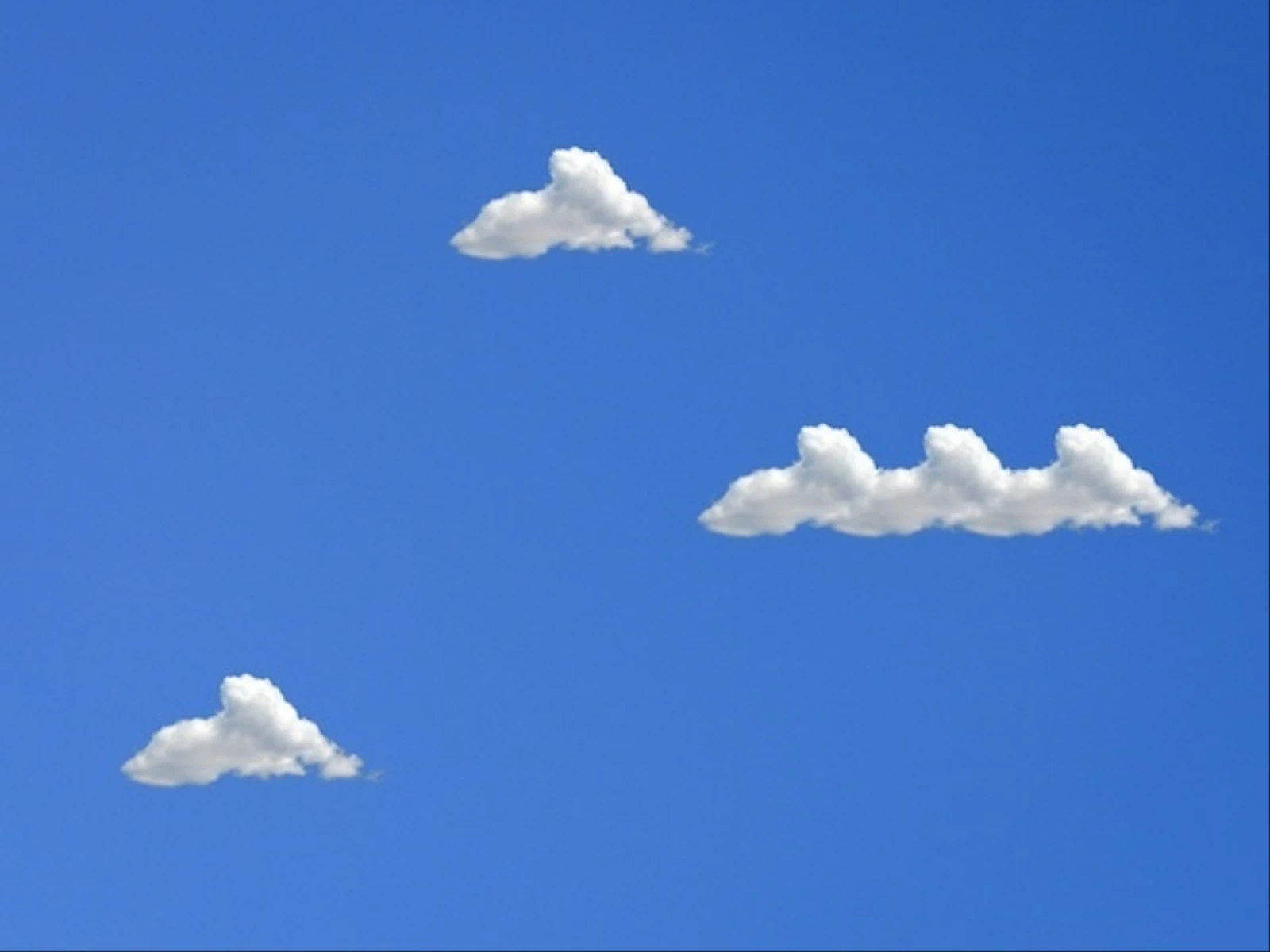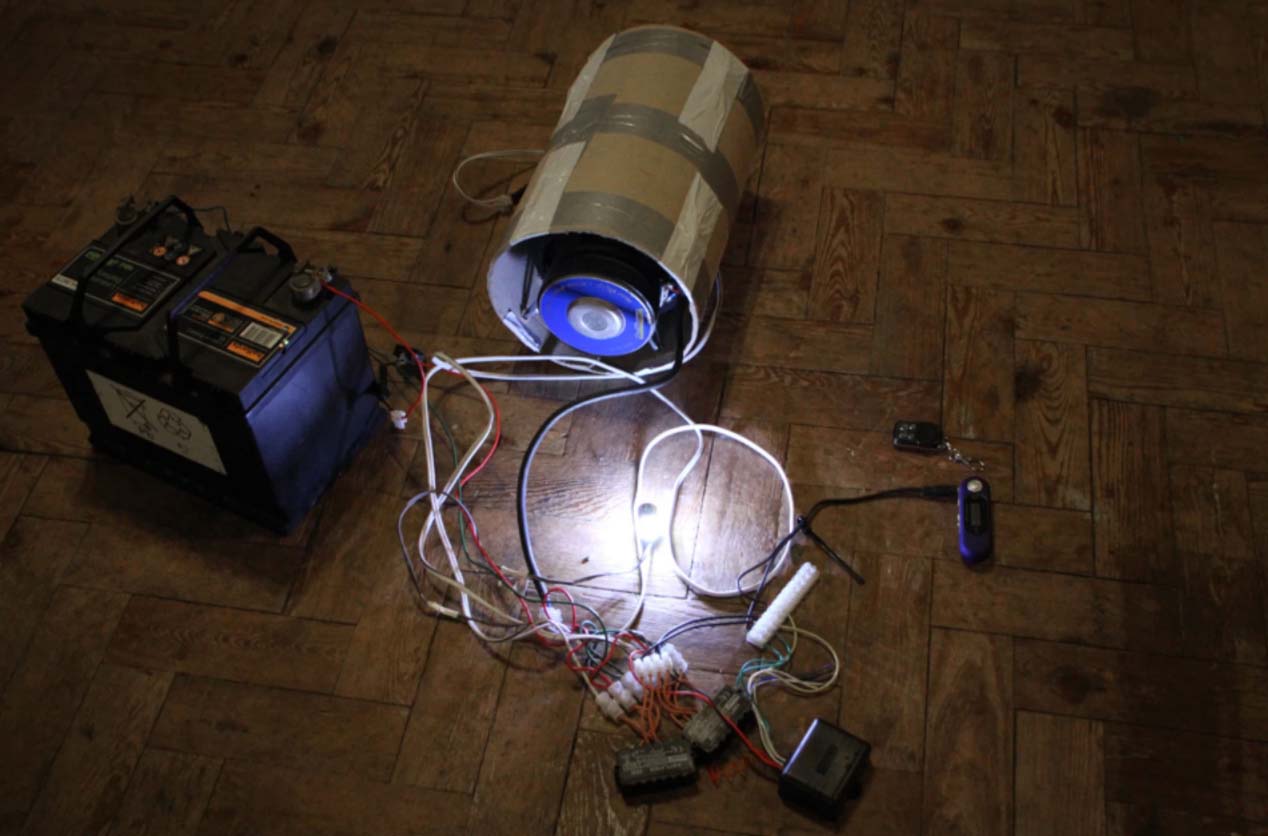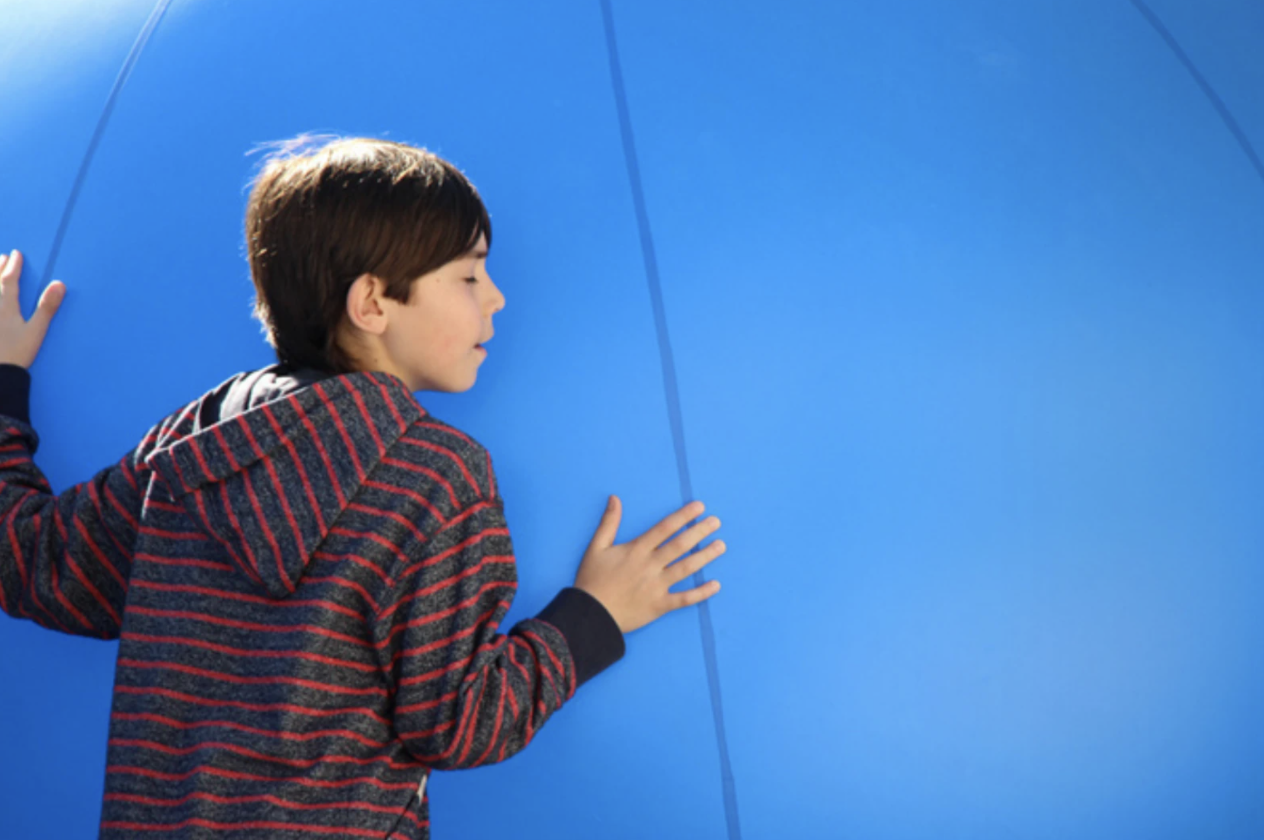Public artworks don’t often include life-sized balloons— but that hasn’t stopped UK artists Alison Ballard and Mike Blow from creating them. POD is an interactive sound installation that allows viewers to experience the physical life of sound waves through the skins of two, six-foot-tall inflatable spheres. The surfaces of POD pulsate in rhythm with a sound file that plays from deep within the sphere. Audience members are invited to drape their faces and bodies over these surface, free to enjoy POD's gentle massage.
The simple premise and no-fuss approach to technology makes the prospect of future collaborations a no-brainer for Alison Ballard (AB) and Mike Blow (MB). With the help and support of Edmund Harcourt, organizer of the one-night-only experimental sound festival Wycombe Listening and head of Hogarth production company, have already begun to implement exciting new directions for POD, including collaborations with spoken word poets, and spatially-organized musical compositions that use the sculptures as instruments .
We spoke to Alison Ballard and Mike Blow in order to find out more about the humble roots of POD, the project's ambitious future, and its (often) chaotic present.
The Creators Project: Tell us about the history of POD.
Alison Ballard: POD as an idea was kind of, a playful, self-indulgent idea. I thought, wouldn’t it be great to resonate the skin of a six-foot balloon with sound? [laughs] And people seemed to respond really well to that idea! So I thought, well, maybe I should do it.
But I don’t really have the patience for all the technology side that it involves, so I rang Mike, who is very tech-ey compared to me. [Mike and I] met on a residency in 2008. He uses a lot more technology in his work on a day-to-day basis and has a very technology-based background, with robotics and all kinds of stuff. So I called Mike and went, “Help me! I have to fit very tiny speakers inside the neck of a balloon but make really low sounds!”
How does POD work?
Mike Blow: It uses this audio phenomenon called beats, where you have two frequencies that are very close together, but not the same. They interact in such a way that you get parts where they reinforce each other and parts where they detract from each other. The original idea for POD was to have just very low sounds. So I was thinking, well, how can you generate a low sound, a deep sound, with smaller speakers? There was no way we could fit a subwoofer inside; the neck of the balloon was like, 40 cm, maximum. The way I figured out was you could have speakers that would do fairly low sounds, but if you use this beats idea you would get this kind of throbbing sound coming out, pulsing sound. And that gives the impression of it being a lower frequency than it is.
POD uses two speakers that face each other inside a cardboard tube—we call it the audio cauldron [laughs]. Each speaker has one pure sine wave going through it at D2, and in the tube they mix together and they make these kind of beating sounds. Technologically, it’s very simple.
What was POD like in its earliest stages?
AB: Shunt, in London, were our first commissioners [for POD]. And that’s when we had six-foot, climbing balloons, as they were called...though I don’t know how you’d climb into them. They were more robust than an average balloon, but they did still burst. And what was interesting was the volume in there [Shunt] was so loud that you couldn’t hear [POD] until you got really close, so everyone had to get very tactile. We ended up having to corner [POD] off, and queue people to get in. It was all a bit unexpectedly crazy!
MB: When Ed [Edmund Harcourt] got in touch with us, we asked if we could have a bit of funding to make stronger [PODs], and get them made out of this PVC. What we hadn’t realized is because they’re inflatables, people would love pushing them, and that kind of thing. As inflatables, they seem to engender that.
AB: At least now if it breaks it doesn’t burst— it just slowly deflates and no one would even notice. Generally it’s a lot hader to break now.
Are you sad to have lost the original balloons?
MB: In some ways, they were kind of nice because they were absolutely uniform. And, of course, these [new] ones are made of panels, so you can see the lines.
AB: Yeah. But I think in way that history of the project is what’s given us this looseness towards what [POD] is and what it can be, because it’s always been in a state of flux. The balloons took a lot of invigilation, and were pretty tiring. It worked, it was great, and in a way the resonance was stronger on the surface of the balloons. But it was a little impractical.
MB: POD as a piece has evolved already in quite a few ways, from putting the light inside, to this time at Wycombe Listening we had the radio control so we could turn the sound on/off, which we had never had before.
AB: I think every time we’ve shown POD, there’s been some small change. Or some big change, in the case of changing from the balloons to the vinyl balls. And there’ll be more changes to come. That’s what’s most exciting to me, that POD is still very much about the concept, rather than it’s execution. You can change all these things about it, but the roots of this very simple experience remain untouched.



